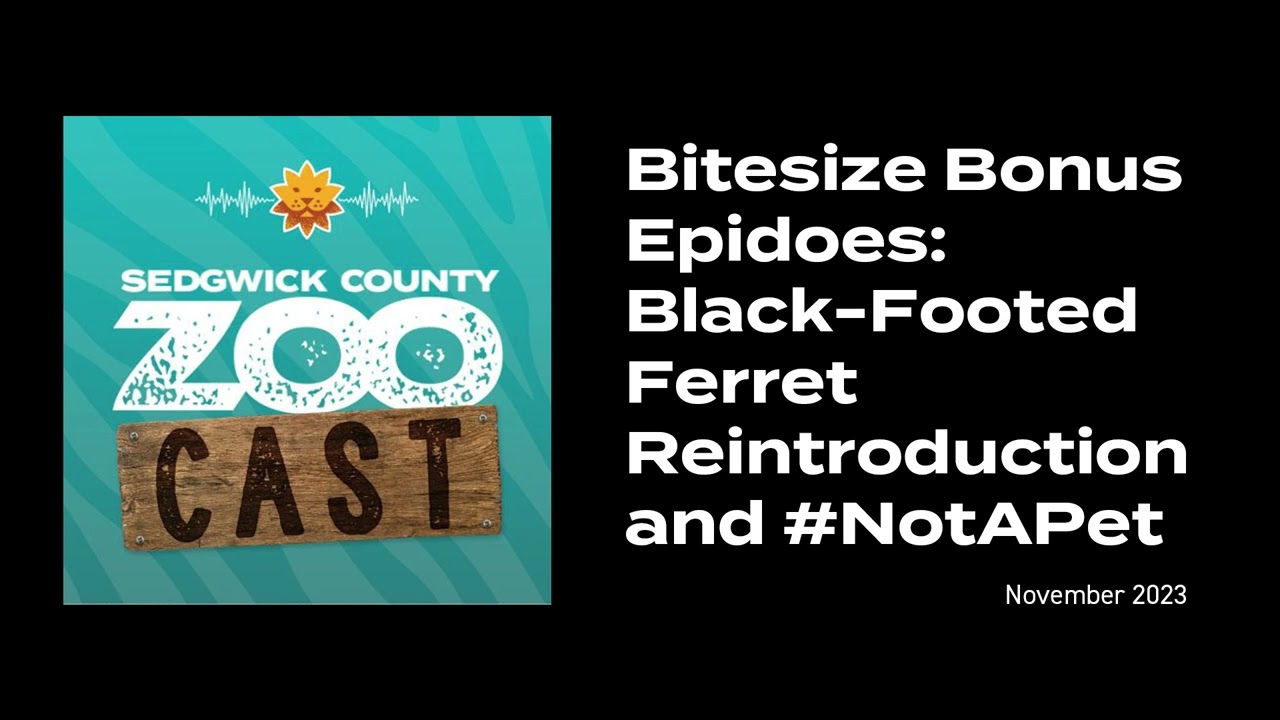– Discover the critical conservation effort behind the Black-Footed Ferret Reintroduction program.
– Understand the importance of distinguishing between wild animals and pets through the #NotAPet campaign.
– Explore the innovative techniques used to boost the Black-Footed Ferret population.
– Learn about the challenges of animal trafficking and its impact on wildlife.
– Find ways to support conservation efforts and educate others about wildlife preservation.
In the vast tapestry of the natural world, each species plays a role that reverberates throughout ecosystems. Today, let’s uncover a story of hope, tenacity, and the symbiotic relationship between humans and wildlife. It’s the tale of the Black-Footed Ferret, a species that clawed its way back from the brink of extinction, and a contemplation of our global responsibility to wild animals through groundbreaking initiatives like the #NotAPet campaign.
The Black-Footed Ferret, affectionately known as the prairie dog hunter, has a story tinged with the threat of irreversible loss. Once roaming the North American prairies, their population faced a daunting decline due to habitat loss, disease, and systematic hunting of their primary prey, prairie dogs. In 1987, a beacon of hope shined through the darkness when a captive breeding program commenced, sprouting the seeds of reintroduction to their native habitat.
The reintroduction process is a delicate tapestry woven with precision, patience, and foresight. It involves meticulous genetic management to ensure a robust gene pool, training kits in predator avoidance and hunting, and ongoing monitoring of released populations. These tireless efforts have led to a slow yet promising increase in their numbers, turning empty prairie dog burrows into homes for this enigmatic creature once more.
A breakthrough came with introducing of a revolutionary scientific method that facilitated the growth of the Black-Footed Ferret population. It involves advanced reproductive technologies such as artificial insemination and the exploration of gene editing to combat diseases like sylvatic plague, a bacterial infection that has been a significant obstacle to their survival.
While the narrative of the Black-Footed Ferret sparks a glimmer of optimism, it’s juxtaposed with a pressing issue: the illegal wildlife trade. Animals around the globe are facing the threat of being reduced to commodities — sold, traded, and trafficked. This illicit industry not only endangers the existence of these animals but also poses significant risks to biodiversity and human health as zoonotic diseases find new avenues to spread.
The #NotAPet campaign was initiated to draw a definitive line between wild animals and domesticated pets. It educates, raises awareness, and advocates for animals that should never find themselves within the confines of our homes or possessions. This campaign aligns with respecting wildlife and their natural habitats, understanding that the allure of exotic species does not justify their removal from the wild.
Poignantly, the most heavily trafficked mammal — the pangolin — symbolizes the devastation caused by the wildlife trade. These shy, scale-covered creatures are sought after for their supposed medicinal value and as a delicacy, leading to severe population declines. Their plight underscores the necessity of campaigns like #NotAPet, aiming to disrupt such trades by fostering global consciousness and strict enforcement of laws.
As these conservation stories unfold, the undercurrent of human action and responsibility is undeniable. Take, for example, initiatives such as the Holiday Gift Membership that support conservation efforts and immerse individuals in the wonders of wildlife. Educational programs like the “Wild Lights” event illuminate our evenings and minds with knowledge and commitment to these causes.
Strolling through these narratives, one cannot help but marvel at the fortitude of species like the Black-Footed Ferret and feel a sobering responsibility towards creatures threatened by trafficking. Every individual can play a role. Understanding conservationists’ hurdles and the dark paths of wildlife trade propels us to act through advocacy, education, or the support of organizations working tirelessly on the ground.
So, whether you’re listening to the engaging tales on the Sedgwick County ZooCast, participating in campaigns, or following the zoo’s social media for updates, your involvement can ripple through conservation circles. As we weave through each day, let’s remember the lessons from our furry and scaly companions — resilience in the face of adversity and unity in the quest for survival.
Ultimately, it’s not only about the survival of a species or the fight against illicit trading. It’s about the interconnections that bind us, the shared destinies of humans and animals, and the legacy we leave in our footprints. For within the heartbeats of the Black-Footed Ferrets, in the quiet strength of pangolins, lie stories that demand to be told, and with each telling, we are offered a chance to rewrite the endings — not with finality but with a hopeful continuation.
*****
Source Description
Welcome to the Sedgwick County ZooCast Bitesize Bonus Supercut.
In the first half of this supercut, learn about the Black-Footed Ferret Reintroduction and the #NotAPet campaign.
Follow us on Social Media
Facebook: https://www.facebook.com/SedgwickCountyZoo
Instagram: https://www.instagram.com/sedgwickcountyzoo/
Twitter: https://twitter.com/SedgwickCoZoo
YouTube: https://www.youtube.com/user/SedgwickCoZoo
00:00 – Vignette
01:16 – Intro
01:37 – What is a Black-Footed Ferret?
03:37 – Black-Footed Ferret Reintroduction
07:58 – Learn about Wild Lights
08:56 – A Scientific Breakthrough in Increasing the Black-Footed Ferret Population
09:47 – Outro
10:15 – Intermission
10:20 – Vignette
12:21 – Intro
12:39 – Animal Trafficking
17:12 – The #NotAPet Campaign
20:36 – Learn about Holiday Gift Membership
21:49 – The Most Heavily Trafficked Mammal
23:13 – Outro


